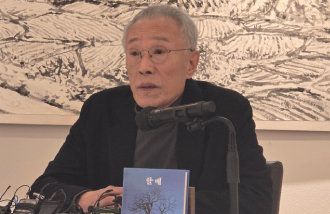Exploring the origins of Japan's 'Joseon Invasion Theory’
Exploring the origins of Japan's 'Joseon Invasion Theory’
Posted October. 07, 2023 08:09,
Updated October. 07, 2023 08:10

Japan is a nation that shares proximity with Korea while also maintaining its distinct differences. Situated along the Japanese coastline, just across the sea from Busan, there is the city of Hagi, home to approximately 50,000 residents. Presently, it falls under the jurisdiction of Yamaguchi Prefecture. However, during Japan's Edo period, Hagi served as the administrative hub for the Choshu Domain. In the context of that historical era, a 'Domain' referred to the territorial area governed by a feudal lord.
The authors delve into Japan's modern history by tracing the evolution of the Choshu Domain. In the Edo period, Choshu was a formidable domain, wielding significant economic and military influence, often ranking among Japan's top four or five. Prominent individuals hailing from this region, such as Yoshida Shoin and Kido Takayoshi, contributed substantially to the Meiji Restoration. Subsequently, Choshu continued to produce influential figures who played pivotal roles in shaping the Japanese Empire. From the Korean standpoint, a significant portion of the individuals associated with the Joseon invasion are from this region. The authors highlighted how Korea suffered as a consequence of Choshu's expansion and investigated the enduring history of animosity between the two nations.
Chapters 1 to 3 explore extensively the history of Choshu itself, offering a retrospective on its expansion and the impact of Western influences. Chapter 4 goes deeper into the intricate relationship between Korea and Japan, focusing on the emergence of the 'Seikanron,' a theory proposing the invasion of Joseon that surfaced towards the end of the Edo period. The authors underscore that the Seikanron gained traction due to the enduring fear and animosity the Japanese held toward the Korean Peninsula, a sentiment rooted in the Three Kingdoms period. Furthermore, the text analyzes the genesis of the theory of the Imna Nihon-fu and examines the process by which antipathy towards the Korean Peninsula transformed into an ideology advocating invasion. While readers less acquainted with Japanese history may encounter challenges in following the narrative, the inclusion of a wealth of photographs serves to enhance understanding.
Ji-Sun Choi aurinko@donga.com




![이준석 “한동훈, 계양을 출마해야…장동혁, 머리에 용꿈 들어차”[정치를 부탁해]](https://dimg.donga.com/c/138/175/90/1/wps/NEWS/IMAGE/2025/12/10/132940178.1.jpg)


